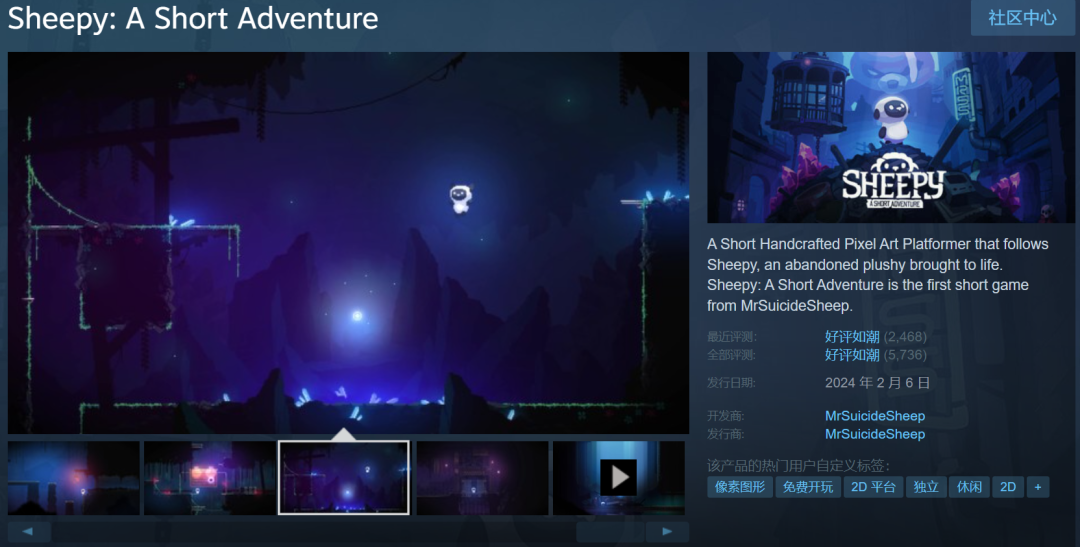“Do not go gentle into that good night.”
Somewhere in the depths of a dungeon in Legend of the Nightingale, I was reminded of Dylan Thomas’ verse. Prior to this, I had endured a series of horrific battles: black lights, humanoid monsters covered in bandages scurrying out of the shadows from time to time, and my teammates and I, armed only with primitive-grade stone weapons, shouldn’t have had to face such a challenge.
Even if we had gotten out of the dungeon with great difficulty, we would still have to trek through the hot desert later on, so whoever likes to go through such a place should go through it.
“Change the map. Go to the forest, the kind with a cool climate and sunny weather, less rain. Also - lower monster difficulty, please.”
Even though my NPC teammates weren’t able to hear my broken thoughts, I prayed as I inserted the card into the shuttle and opened the portal.
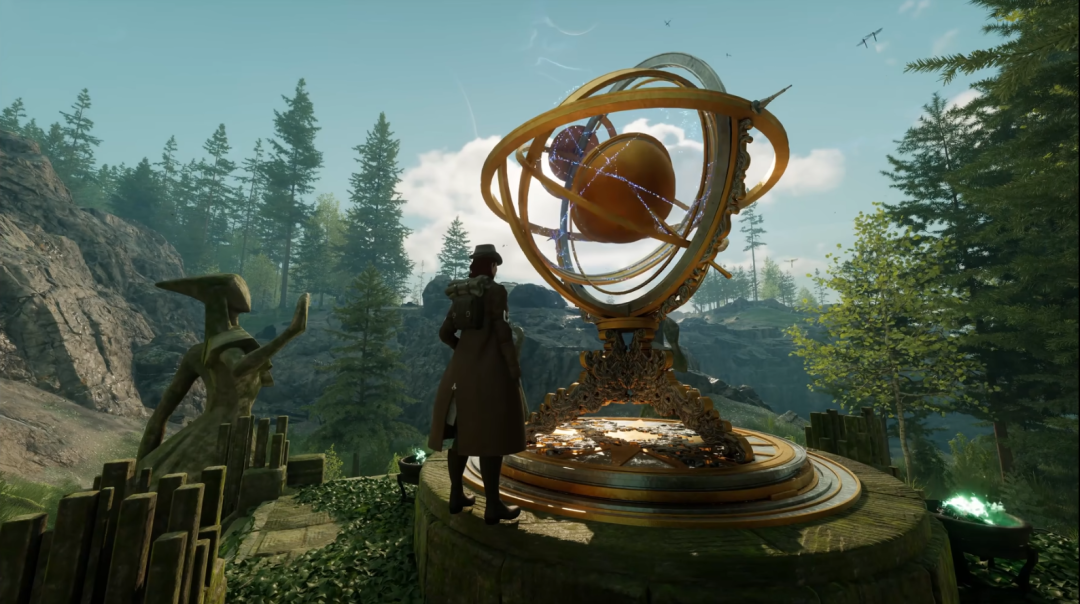
Nightingale, the “magical Victorian style” of the game, is finally coming out.
While Steam has seen countless SOC (Survival Open World Construction) games every year, 2024 will undoubtedly be a big year for the genre. The beginning of the year featured the breakout dark horse Phantom Beast Paru, followed by the long-awaited Mist Locked Kingdom.
Hot on its heels was Legend of the Nightingale, which also opened its stress test and closed beta during the Chinese New Year, and we got to try out the first and middle stages of the game’s content before the game opened its sneak peek on the 21st.
When the concept PV was released more than two years ago, the game attracted a lot of SOC game fans’ attention, and has been ranked high on Steam’s wishlist: for no other reason than the fact that Legend of the Nightingale’s style of painting doesn’t really look much like other SOC games.
There’s magic, demon spirits, and portals. Characters and elves also dress up in costumes typical of the Victorian era, so if you don’t know, you’d think you’d traveled to Shame.
Legend of the Nightingale, first announced at TGA 2021
Players will also be able to craft and use Victorian firearms, and even add enchantments to them, in order to fight off …… mythical enemies that match the firepower of these weapons.
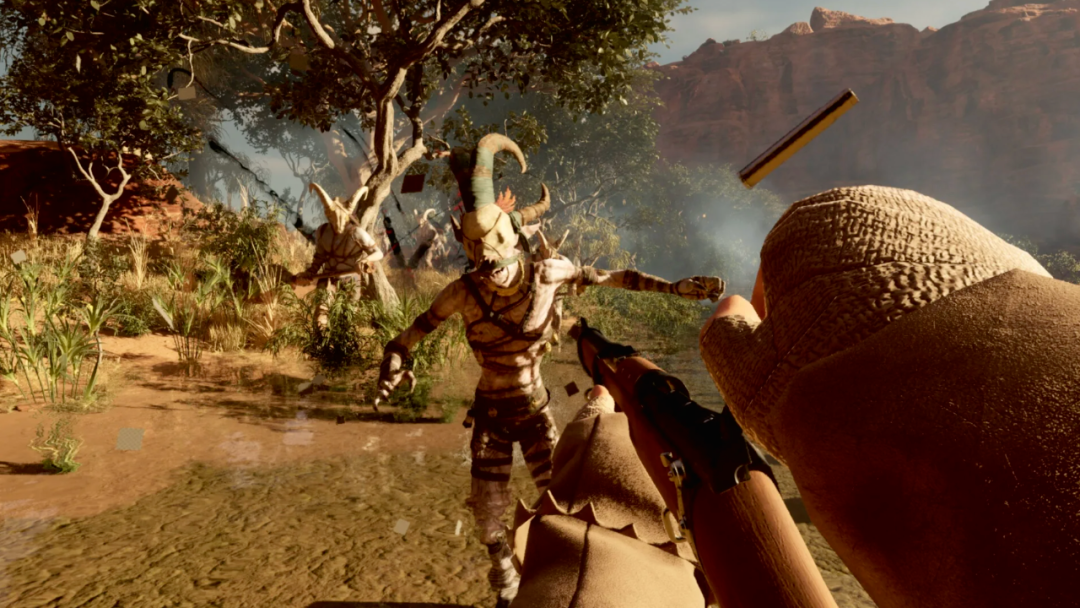
Going into the beta, I realized that the worldview of Legend of the Nightingale is far more complete than the parts previously revealed. Or, rather, that much of the setting of a game that has been emphasizing the “magical Victorian style” from the start is justifiably “for this dish of English vinegar dumplings”.
For example, few SOC games emphasize character differentiation in the characterization phase, but Legend of the Nightingale’s card-opening process allows players to choose their own family tree and origins. The “genealogy” is interesting in that players can “inherit” a face shape for themselves by picking “what their ancestors looked like”. Origin affects initial equipment and some of the game’s dialog, and the text descriptions of the different origins are also relevant to the game’s story.
“Unprepared Citizen”, it’s hard to imagine surviving in the wilderness in this outfit!
In the teaching level, the guide NPCs will remind you that humans have become “wanderers” - due to some kind of natural disaster, the original Earth is in danger and not suitable for human habitation.
Luckily, in the Victorian era of this dimension, human beings have learned magic by communicating with the creature “Demon Spirit”. With the support of modern technology and classical magic, the realm walkers (i.e. the protagonist and his counterparts) are able to travel and adventure in different time and space, exploring the space of survival, and ultimately searching for the last bastion of human beings! “Nightingale City”.
Despite mankind’s mastery of magic, coming into the wilderness unprepared to “make magic in the dirt” is not an easy process. As with most SOC games, survival building in Legend of the Nightingale begins with “tree jacking”.
With limited knowledge and resources, players start with a single blade of grass to build their camp and craft their means of production. Hunting, logging, quarrying, various workbenches and living tools, everything follows the traditional SOC “ancestral ways”.
That is, until one bizarre event after another reminds you that Legend of the Nightingale is a completely different fantasy world. For example, the game has a weather system that has a huge impact on the game - it’s no surprise that rain interferes with fire making and stamina restoration, but the bad weather in the realm is often more severe than you’d expect:
The first time I saw this alert, I didn’t realize “what’s so scary about hail” until a hailstorm of firestorms smashed my blood and equipment durability in half, leaving me to find shelter and wait for the sky to clear.
That’s why making rain gear is so important in the game.
The wilderness is also populated by creatures that look like they’ve popped out of 18th and 19th century fantasy novels and fairy tales. Compared to a rooted tree man who doesn’t know which way his face is turned, or a mechanical creature whose eyes widen and his head suddenly starts spinning, the chance encounter with a normal wolf pack can feel like “the warmth of the earth”.
Some of these “magical creatures” also have special interactions, such as a thunderous roar I heard early in the game when I was hiding in my hut, scrubbing materials.
After thinking about how death doesn’t seem like much of a punishment, I plucked up the courage to look out and saw a giant deer-headed monster passing by my house, leaving a trail of broken trees in its wake - it was delivering lumber, which saved me a handful of axes’ worth of durability.
Through interactions and trials with other creatures, demon spirits and humans (thankfully, there are humans too), players can gradually build their manor and explore different maps step by step to move the story forward.
Encountering humans really is a case of the old folks meeting the old folks.
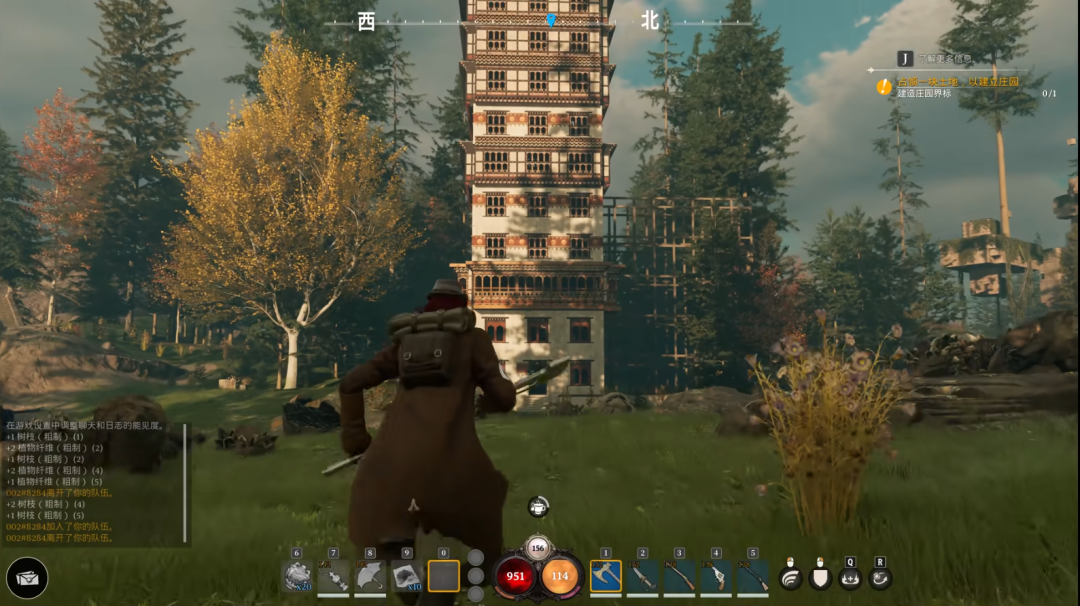
It is worth mentioning that one of the most important settings of the game is the ability of the protagonist to travel back and forth between different realms with a special card system. By inserting different cards into the portal machine, the player can choose which realm he or she wants to travel to - in other words, the player can “mix” the world he or she wants to travel to through human guidance.
After collecting and crafting cards, players can manually anchor their next destination with a Primary Card, Environment Card, and Secondary Card. The main card determines the environment of the target realm (forest, desert, or swamp), while the environment card determines the difficulty level of the realm and the content of the game (strength of monsters, quests, etc.).
The most interesting thing is the “side cards” setting, which is similar to adding a “world buff” to the current realm. There are cards that make the player less likely to get hungry, cards that make the player move faster and less likely to get injured, and cards that make the equipment the player produces in the realm more powerful. …… If the amount of content in this part of the game is enriched in the future, I think it will also have a bit of an “infinite stream” feel to it. I think it’s going to be a bit of an “Infinite Stream” game.
Searching for knowledge and information about magic + technology, advancing the narrative, traveling to a completely different realm - defeating stronger monsters, and getting closer and closer to the legendary “Nightingale City”. This is the world that Legend of the Nightingale reveals to the player in the first few hours.
So what’s at the heart of Legend of the Nightingale underneath the magical Victorian veneer?
All survival games may start with tree jacking, but they don’t end with tree jacking, and the SOC genre is ultimately about answering the question, “What do we play after we’ve solved the problem of food and clothing?
To describe in simple words the differences between Legend of the Nightingale and other SOC games, you can write a lot of judgmental sentences: the worldview is a Victorian style with magical elements, just like what Arkane likes to do; there are all kinds of copies, puzzles, and large-scale bosses on the open-world map, so you can “clear the map” just like in an open-world RPG; the tech tree climbs all the way up to the top of the world; and there are many different types of technology, such as the “SOC” and the “SOC”. “The tech tree climbs all the way up to the modern era, and players can play with bolt-action and lever-action rifles, which play a bit like HUNT.
In terms of flow, I think the production team wanted players to quickly become curious explorers after familiarizing themselves with the construction and production chain of the manor, as well as the combat style, while experiencing both open-world and linear content.
In the open world section, each time a new realm is created through cards, there are a large number of special locations on the map that can be explored, including towers and crypts that focus on combat, the puzzle level “Prison of Talent”, and the hard copy “Prison of Power” that has a level requirement. Some special buildings that don’t belong here may be relevant to the main flow of the game.
Under the pressure of advancing through the difficulty of the main game, players will naturally explore the world to get better materials, equipment, and designs to arm themselves, as well as to build safer and more productive homes.
It’s worth noting that resource deployment and industrial production in Legend of the Nightingale is actually rather complex.
Like cutting down trees to obtain large wood, itself both direct use, but also through the processing into wood, wood can also be processed into paper …… animal skins, meat, other stonework resources, processing also have quite a number of procedures.
In the early stages of the game when the production of materials is not yet complete, such a manual process will bring some trouble to the player. For example, the leather production is also divided into leather and belt settings, I think the production team is to restore a certain “industrial era of sophistication”.
Like the game’s elaborate building system, where different facilities add to and affect each other (for example, being near a fire makes your workbench warmer and more productive), the construction of the manor is even more “ingredient-intensive”. Once the blueprints are unlocked, the game categorizes everything from roofs and staircases to walls according to different architectural styles, so it’s up to you whether you want to build a traditional Victorian building or a gothic tower.
Incidentally, the game can be switched between third and first person at will.
On the other hand, production in Legend of the Nightingale is “systematically reduced”. For example, the player can convert almost all items in the props bar directly into “souls”. As a common currency among the realms, souls can not only be used to trade with merchants, but can also be used to repair the durability of the player’s items, eliminating the need for materials like the “One Whip Law”.
In addition to selling blueprints and some items, merchants can also buy most resources directly with Souls (and higher-level essences). In other words, as long as you put in a certain amount of labor, you can definitely get what you want, and if you don’t want to study the production process, you can also sell raw materials and buy processed materials directly - of course, this may be made by the realm merchants to the urban-rural scissors difference.
And many of the necessary material aspects can be obtained by fighting and exploring for like-for-like substitutes. For example, making cards for traveling through the realm requires ink, which is relatively complicated to develop - just like in reality, you have to master the grinding technology, master glass bottle making, and get your hands on raw plants or ores that can be used to make ink.
However, you can also get blood or pus from monsters and write directly with it instead of ink - it makes sense to write in blood. You can also get gunpowder directly from a number of “fire-carrying” monsters, so you don’t have to think about where you’re going to dig up materials today.
This kind of design will obviously help some players who are overwhelmed by the thought of the production process to find a way to skip class. Similarly, by completing certain quest objectives, players can recruit NPC Realm Walkers into their party as companions to help them fight and gather resources, which also largely eliminates the productivity and combat pain of “not having friends to play with” (the game itself supports up to six people online).
With fewer worries, players will be able to enter the core combat-exploration process with less burden. Starting out as a refugee, traveling back and forth between different realms, experiencing exotic landscapes, and gradually making themselves look “more human”, this kind of steady positive cycle is probably the most important thing that Legend of the Nightingale wants to bring to the player’s experience.
–Of course, many of the battles in the game are still quite oppressive, so before you set up the realm you want to travel to with your cards, you’d better prepare some “elegant” clothes in terms of appearance and attire.
Even paragliders are elegant!
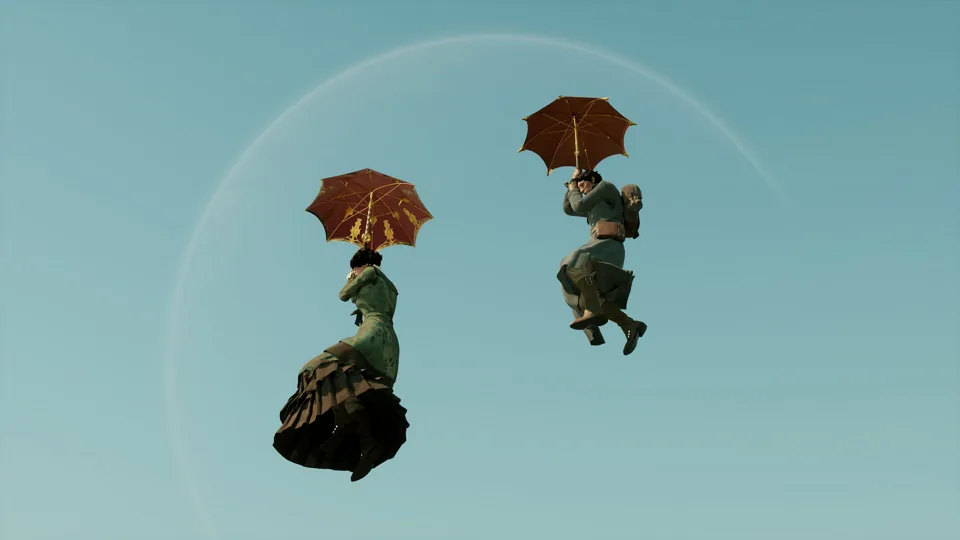
As one of the longest and best selling genres on Steam, SOC games have gotten so far that they’re actually starting to “roll”.
They say it’s all about survival, but the new SOC games nowadays seldom make it difficult for players by simply using the survival value scale, and only rely on “hunger” and “cold” to create a sense of urgency; the positive feedback that these games try to create isn’t only limited to food and clothing! The positive feedback these games try to create isn’t limited to the big, happy house that comes after you’ve been fed.
Side stories and boss rush, pet/partner development, equipment collection and build construction have all gradually become content that SOC developers are trying to add to their games. And when it comes to “Legend of the Nightingale”, which will soon be available for pre-emptive experience, they also want these elements to be integrated into the worldview of “Magical Victoria”.
After all, few SOC games care about “narrative experience” or cultural expression based on real history. But Legend of the Nightingale not only makes a lot of plot text, but also brings a whole set of corresponding “Victorian customs”.
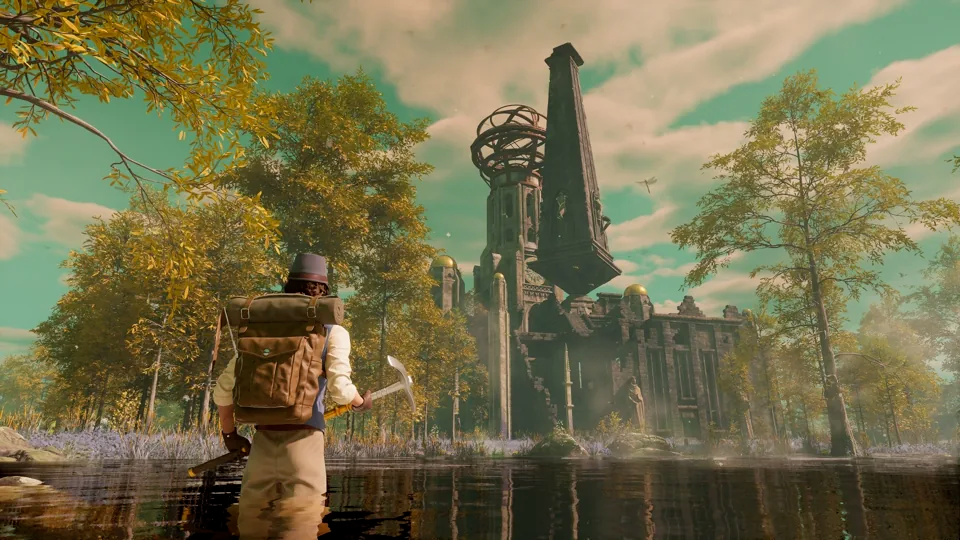
In the course of the game, we see wandering human beings traveling through portals again and again in search of their homelands, and then we see a lot of realistically based buildings and relics on the map: Gothic minarets, classical Greek columns, and Viking’s shattered ships……. Players can’t help but imagine how human civilization has survived on the realms of the realm in this world where magic and technology coexist. How exactly human civilization has left its traces in the realm.
Of course, one day, the people who “leave their mark” will be the players who come to the Realm. I’m looking forward to the game’s official launch and to see if the master architects of the Internet will be able to recreate a real 19th century landscape in a broken world, as opposed to their own shacks, and play with this new “SOC big toy” in a new way.






